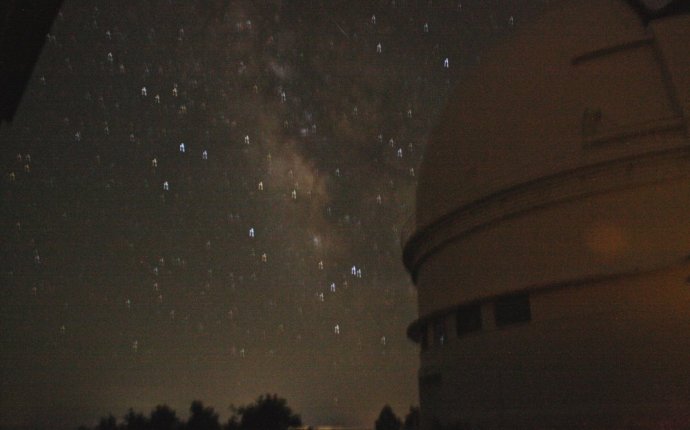
Wesleyan University Astronomy
The Astronomy Department at Wesleyan University offers a course of study leading to a master's degree. It includes physics, math and astronomy courses tailored to the needs of the individual as well as a master's thesis. We are particularly interested in promising students who, often owing to a late start with physics, find themselves unprepared for admission to an astronomy PhD program. Students who desire additional background in astronomy to support a career in teaching or research support may also benefit from our program. We encourage applications from women and minorities as these populations are underrepresented in the physical sciences.
The research interests of the current faculty are: Dr. William Herbst–star formation, Dr. Ed Moran–extragalactic X-ray sources and X-ray background, Dr. Seth Redfield–exoplanets and the interstellar medium, Dr. Roy Kilgard–high-mass X-ray binary populations and statistical challenges in high energy astrophysics, and Dr. Meredith Hughes–planet formation.
The department is well equipped for instruction and research. Facilities include a network of MacOS X workstations, a CCD attached to a 24-inch reflector, a 20-inch refractor equipped for observational work, and the substantial astronomical library of the Van Vleck Observatory. Members of our faculty are frequently awarded observing time on world-class telescopes, including the Hubble Space Telescope, Chandra X-ray Observatory, and dozens of ground-based telescopes.
Graduate students are generally supported with full year stipends (currently about $24, 000 per year), plus they receive a full tuition waiver. Most of our students gain valuable teaching experience by serving as teaching assistants for at least part of the time they are here. Some research assistantships are occasionally also available. Each MA student can create a personalized curriculum that best matches their academic needs. This usually includes a combination of upper level astronomy and physics courses, plus a strong component of hands-on research.
Where do our astronomy masters students go when they graduate? Some choose to go on to Ph.D. programs in Astronomy, while others pursue a variety of careers, including science education and support for major research facilities. As an example of where they go and what they work on, here is that information for some recent students:
| Wesleyan M.A. Class | Student | Where are they now? | What are they doing? |
|---|---|---|---|
| 2015 | Sam Factor | University of Texas | Ph.D. program, astrophysics |
| Nicole Arulanantham | University of Colorado | ||
| 2014 | Amy Steele | University of Maryland | |
| Eric Edelman | Slooh Community Observatory | Broadcast Production | |
| 2013 | Raquel Martinez | ||
| Diana Windemuth | University of Washington | ||
| 2012 | Holly Capelo | University of Göttingen, Germany | |
| 2011 | Katy Wyman | Harvard-Smithsonian Center for Astrophysics | Support Astrophysicist |
| Tyler Desjardins | University of Western Ontario | ||
| 2010 | Erin Arai | Boston University | |
| 2009 | Evan Tingle | Research Assistant | |
| Samantha Lawler | University of British Columbia | ||
| Darik Velez | American international School of Cape Town | High school math and science teacher | |
| 2008 | Jenny Konon | United States Coast Guard Academy | Physics Instructor |
| Rachel Fuechsl | McDonald Observatory |
Public Affairs Specialist |
|
| Chris Dieck | U.S. Naval Observatory |
Astronomer |











